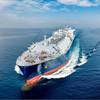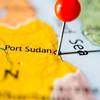MDSU-2 Aids in Minneapolis Bridge Recovery
By Senior Chief Mass Communication Specialist (SW/AW) Dave Nagle, Navy Expeditionary Combat Command Public Affairs
Navy divers from Mobile Diving and Salvage Unit (MDSU) 2 from Naval Amphibious Base Little Creek are bringing unique expeditionary diving and salvage capabilities to the search and recovery efforts at the site of the I-35 bridge collapse. MDSU-2 divers and a command and control element that includes representatives from Naval Sea Systems Command and Underwater Construction Team (UCT) 1 have been in Minneapolis since Aug. 5, at the request of the Department of Transportation and in support of the Hennepin County Sheriff’s Office. Divers are working in shifts daily, conducting a search of the area, removing debris and recovering vehicles. As experts in expeditionary combat salvage, MDSU-2 has earned its reputation during combat salvage operations to open the Al Faw waterway in Iraq and through unique operations, such as the recovery of TWA Flight 800, the Challenger and Columbia Space Shuttles, and Swiss Air Flight 111 recovery, refloating of YFU-83 in Puerto Rico, the deep salvage of USS Monitor wreckage, and recovery of Haitian ferry victims. Recent disaster relief operations include response to Hurricane Katrina.
MDSU-2 provides expeditionary combat salvage capabilities that include mobile ship salvage, towing, battle-damage repair, deep-ocean recovery, harbor-clearance demolition and emergent underwater ship repair. “Within 48 hours, two teams of divers with 75,000 pounds of equipment were on scene, ready to support,” said Cmdr. Dan Shultz, MDSU-2 commanding officer. “Within nine hours of arriving here, a dive team was in the water conducting recovery dives in surface-supplied hard hats.”
Shultz explained that his unit’s mission in Minnesota directly relates to the nation’s overall national strategy. MDSU-2 is part of Navy Expeditionary Combat Command (NECC), a global force provider of adaptive force packages of expeditionary capabilities to joint warfighting commanders. NECC serves as a single manning functional command to centrally manage the current and future readiness, resources, manning, training and equipping of the Navy Expeditionary Force.












